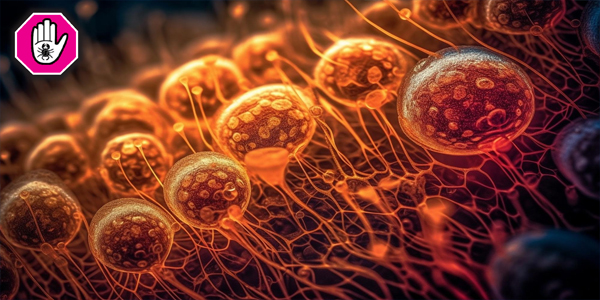Prostate cancer is one of the most common cancers affecting men worldwide. Understanding its risks, signs, and prevention methods is crucial for early detection and effective treatment. Here’s what you need to know about prostate cancer.
1. What is Prostate Cancer?
Prostate cancer develops in the prostate gland, a small, walnut-sized gland in men that produces seminal fluid, which nourishes and transports sperm. Although most cases of prostate cancer grow slowly, some types can be aggressive and spread quickly to other parts of the body.
2. Key Risk Factors
While the exact cause of prostate cancer remains unclear, several risk factors can increase the likelihood of developing the disease:
- Age: Prostate cancer primarily affects older men, with most cases diagnosed in men over 50.
- Family History: A family history of prostate cancer increases your risk, especially if a close relative like a father or brother had it.
- Race: African American men have a higher risk and are more likely to develop aggressive forms of prostate cancer compared to other racial groups.
- Diet and Lifestyle: Diets high in red meat, fatty foods, and dairy may slightly increase the risk, while maintaining a healthy diet rich in fruits, vegetables, and whole grains can reduce it.
| Risk Factor | Details |
|---|---|
| Age | 65% of prostate cancer cases are diagnosed in men aged 65 or older. |
| Family History | A man with a father or brother with prostate cancer is 2-3 times more likely to develop the disease. |
| Race | African American men are 60% more likely to develop prostate cancer and have a higher mortality rate from the disease. |
| Diet and Lifestyle | Diets rich in red meat and fatty foods are linked to a higher risk of prostate cancer, while a diet rich in fruits and vegetables can lower the risk. |
3. Symptoms to Watch Out For
Prostate cancer often does not cause symptoms in its early stages. However, as the cancer advances, symptoms may include:
- Difficulty urinating or a weak urine flow
- Frequent need to urinate, especially at night
- Blood in urine or semen
- Painful ejaculation
- Erectile dysfunction
- Discomfort or pain in the pelvic area or lower back
If you experience any of these symptoms, it’s crucial to consult a healthcare provider. Many of these signs are also common with benign conditions like an enlarged prostate, but getting checked early can make all the difference.
4. Screening and Early Detection
Early detection is key to successfully treating prostate cancer. The two most common screening tests are:
- Prostate-Specific Antigen (PSA) Test: This blood test measures the level of PSA, a protein produced by the prostate. Elevated PSA levels can indicate prostate cancer, but they can also be caused by non-cancerous conditions like prostatitis or an enlarged prostate.
- Digital Rectal Exam (DRE): In this test, a doctor physically examines the prostate gland for any abnormalities such as lumps or hard areas.
Men should discuss with their doctor whether to begin screening at age 50 or earlier if they have risk factors like a family history or are African American.
5. Treatment Options
Treatment for prostate cancer varies depending on the stage and aggressiveness of the cancer. Options include:
- Active Surveillance: For slow-growing prostate cancer, your doctor may recommend monitoring the cancer over time rather than immediate treatment.
- Surgery: Involves removing the prostate gland (prostatectomy), which may be recommended for localized cancer.
- Radiation Therapy: Uses high-energy rays to kill cancer cells or shrink tumors.
- Hormone Therapy: Lowers testosterone levels, which can slow the growth of prostate cancer cells.
- Chemotherapy: Used when the cancer has spread beyond the prostate and other treatments are not effective.
| Treatment Option | When Used | Description |
|---|---|---|
| Active Surveillance | For low-risk, slow-growing cancer. | Regular check-ups to monitor cancer progression without immediate intervention. |
| Surgery | When cancer is localized in the prostate. | Removes the prostate gland entirely (prostatectomy). |
| Radiation Therapy | For localized or advanced prostate cancer. | High-energy rays target and destroy cancer cells. |
| Hormone Therapy | When cancer is spreading and needs to be controlled. | Reduces testosterone levels, which prostate cancer cells rely on to grow. |
| Chemotherapy | For advanced prostate cancer that has spread to other parts of the body. | Medications target rapidly growing cancer cells. |
6. Prevention and Healthy Living
While some risk factors for prostate cancer, such as age and genetics, cannot be controlled, adopting a healthy lifestyle can lower your overall risk. Some prevention strategies include:
- Maintain a Healthy Diet: Focus on eating plenty of fruits, vegetables, and whole grains.
- Exercise Regularly: Physical activity helps maintain a healthy weight and boosts overall health.
- Limit Red Meat and Fatty Foods: Cut down on foods high in fat, particularly from animal sources.
- Stay Informed and Screened: If you’re at higher risk, regular screening is essential.
7. Take Action: Talk to Your Doctor
If you’re concerned about your risk or notice any unusual symptoms, don’t wait. Regular discussions with your healthcare provider can lead to early detection, better outcomes, and peace of mind.
Conclusion
Prostate cancer is a serious health concern for men, but with awareness, early detection, and treatment, many men can live long, healthy lives. Stay informed, live a healthy lifestyle, and make screening a regular part of your health routine.


